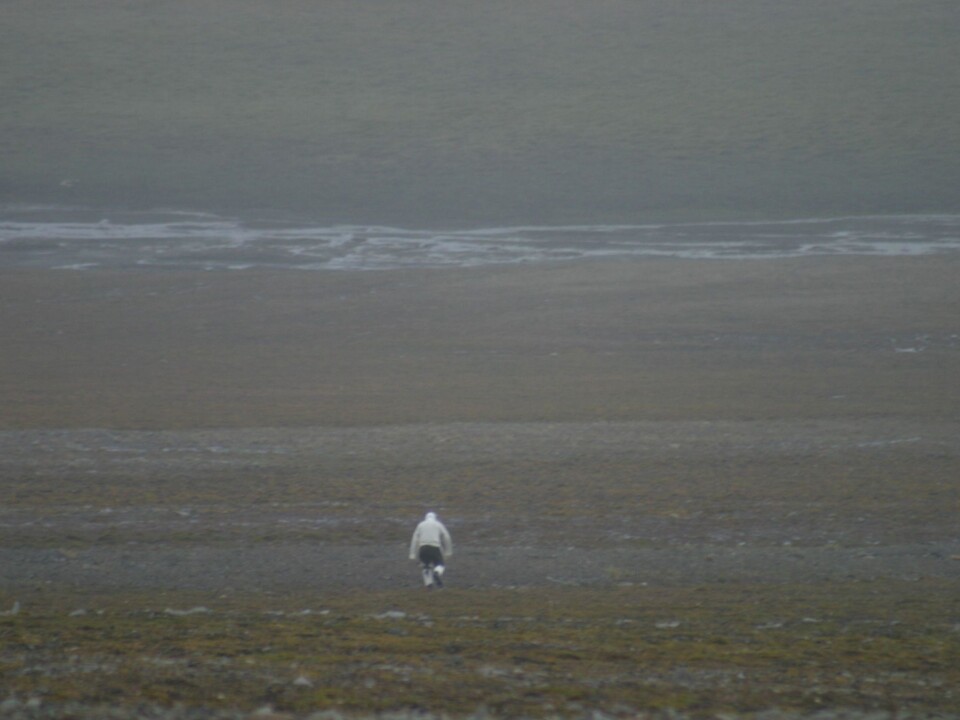An article from University of Oslo

Norwegian researchers win Ig Nobel Prize
They were recognized for their study on how reindeer react to seeing humans who are disguised as polar bears.
Denne artikkelen er over ti år gammel og kan inneholde utdatert informasjon.
A parody of the Nobel Prizes, the Ig Nobel Prizes honor achievements that first make people laugh, and then makes them think.
One of the prizes of 2014 is awarded Eigil Reimers and Sindre Eftestøl at Department of biosciences at the University of Oslo (UiO) for the article Response Behaviors of Svalbard Reindeer Towards Humans and Humans Disguised as Polar Bears on Edgeøya.
Sort of a big deal
The Ig Nobel Prizes are awarded every year at Harvard University (Boston, USA) and originated in 1992.
“The prize will lead to more people reading the paper than would normally be expected. Plus a little PR, ,” says Eigil Reimers.

He admits that the news about the award was met with surprise, joy and a little chuckle.
Background
What were they really trying to figure out?
The study is part of a larger project on behavior where the researchers look at cautiousness and fear-flight responses in wild reindeer under different environmental conditions.
“For example how it is influence by humans and predation. As well as genetics, for example between wild reindeer with and without tame background,” Reimers explains.
Since the polar bear protection started in 1973 the populations have increased on Svalbard. Parallel changes in ice conditions have forced the polar bear to spend more time on land, leading to interactions between the bear and the reindeer on Svalbard.
In the awarded study, the biologists wanted to know how these conditions influences the interactions between the two species, on shorter and longer time scales.
Polar bear disguise
After 3 weeks of excellent weather conditions, the researchers had done most of the planned field work, which included 50 observations on reindeer responses to humans approaching.
Leaving time for creative ideas while waiting to be picked up by the helicopter.
“It was a spontaneous idea after having observed polar bears in the inner parts of Edgeøya where we had seen reindeer earlier. On one occasion we also observed a polar bear clearly interested in the reindeer.”
Using whatever they had of white clothing, Reimers was dressed up as a bear. The rest of the story has been scientifically documented. And now also rewarded.
But what about the results?
The distances at which the reindeer first showed fear and flight, and the total flight distance, were 1.6, 2.5, and 2.3 times longer when approached by the polar bear costume compared to a person in dark clothes.
The conclusion about the predator-prey interaction is also supported by a previous finding where the reindeer showed 2.2 times more cautiousness in areas densely populated with bears compared to areas with less bears.
Follow-up study?
As for now, finances are limiting more studies on reindeer responses to polar bears. But the biologists would like to learn more about the interactions.
“It would be nice to compare the responses in more detail in areas with different levels of polar bear densities. In addition, we would like to do control experiments in mainland Norway where polar bears do not exist.”
“And we would of course like to use a more convincing polar bear costume,” Reimers explains.
The 2014 Ig Nobel Prizes were awarded in a gala ceremony in Harvard's Sanders Theatre last Thursday night.































